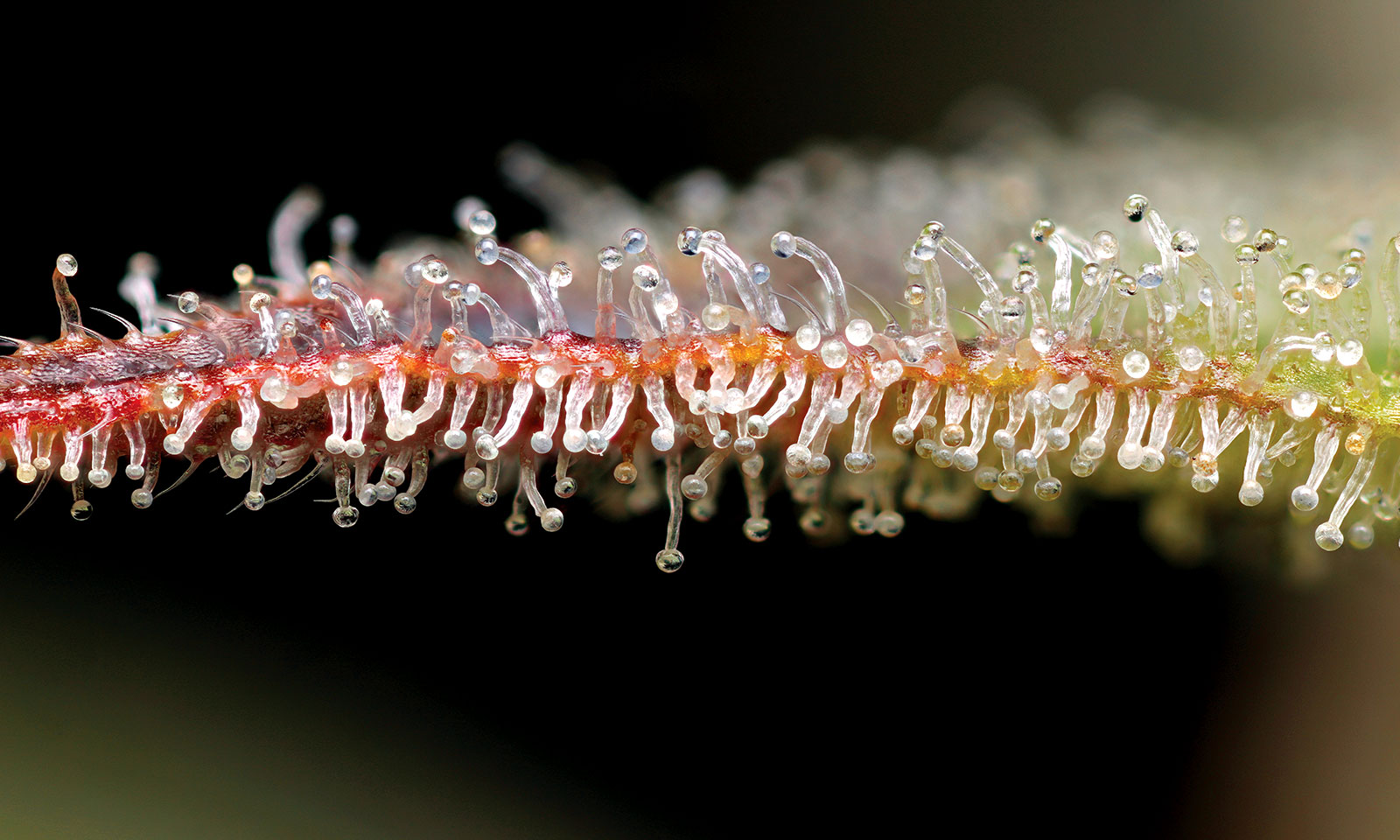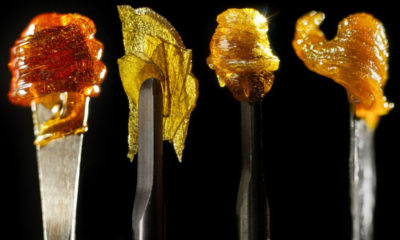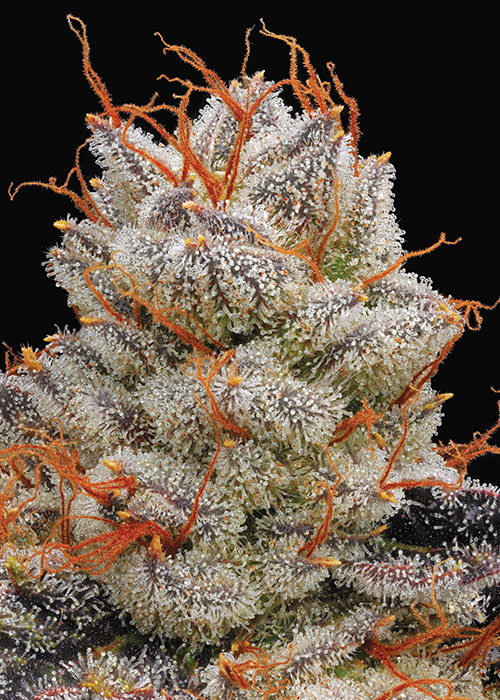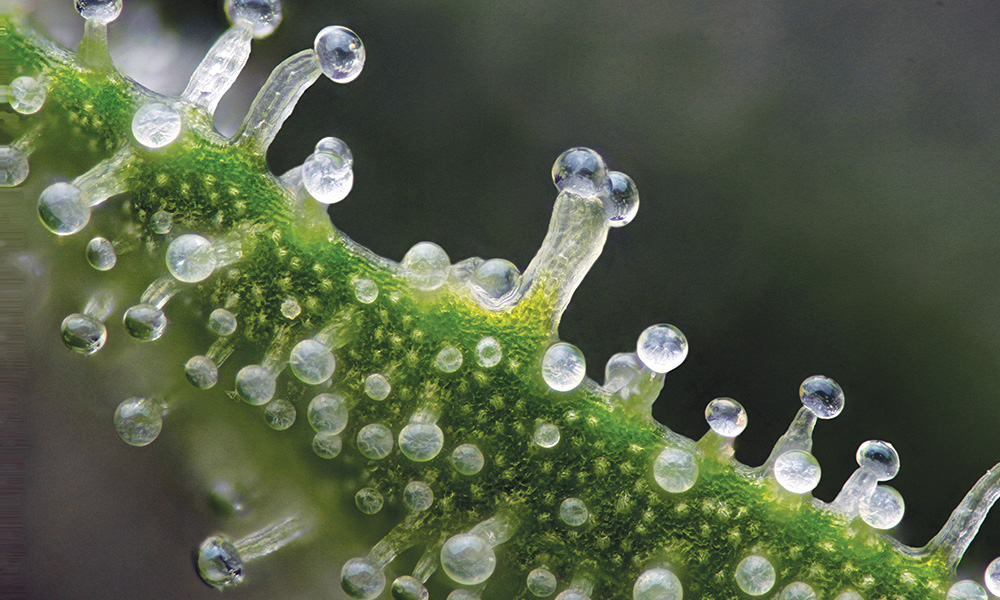Photos Erik Christiansen
A Photographer’s Guide to the Cannabis Galaxy
Nugshots founder Erik Christiansen produces cannabis photography that zooms viewers in for a cosmic ride.
Eleven years after Dr. Raphael Mechoulam identified the THC molecule, a man named Steven Sasson built the first digital camera. It weighed eight pounds and, when it took its first picture in December 1975, the camera needed 23 seconds to transfer the photo onto a cassette tape.
In the decades since these two trailblazing scientific discoveries, both cannabis research and digital photography have developed into massive industries (albeit at different levels of mainstream integration). In the process, both industries have often sashayed along the arbitrary line between science and art, making room for passionate individuals — both amateur and professional — to push the field forward. Backyard growers discovered how to breed for different desirable plant characteristics. Family photographers developed new lighting techniques. And, with increasing regularity, these individuals have helped the two fields of scientific research and cannabis documentation intersect.
Erik Christiansen is perhaps the best example of such an individual who sits at the crossroads of cannabis research and digital photography, science and art. The 30-year-old founded the popular cannabis photography company Nugshots in 2009, released a book called “Green: A Field Guide to Marijuana” in 2015 and has since become one of the most renowned cannabis photographers in the industry. While there are plenty of excellent cannabis photographers working today, Christiansen’s photos are uniquely technical and motivated by a special scientific curiosity.
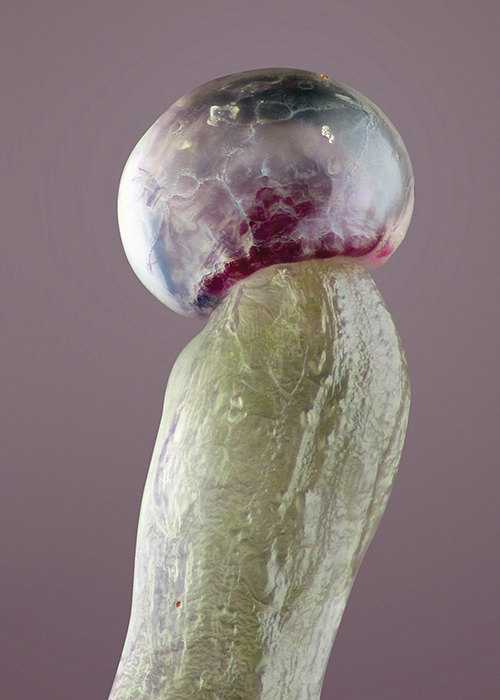
Christiansen stacked 200 photos to capture this Purple Pakistani Chitral trichome. Its purple coloring is rare, and Christiansen says “the cells that are purple in these photos are the same cells that run amber as trichomes mature.”
For example, he’s photographed a single cannabis seed through a lens that magnified the seed’s surface 20 times, revealing an ethereal opal surface of canyons and ridges. He’s stacked 45 macro photographs on top of each other to show a pair of conjoined trichome heads. And perhaps most importantly, he’s figured out how to stack photographs into videos that zoom around and into a bud with near-frightening clarity.
For one recent “hyperzoom” video, Christiansen photographed a single Wedding Cake cola 2,160 times. The process involved photographing the cola at five different levels of zoom. For the first four levels, Christiansen took 360 photos — a photo for each degree around the plant. On the most zoomed-in level, he took 720 photos. Then, over a process of months he experimented with how to stitch the photos together into a video that zooms 1400 percent into the cola, while it rotates in empty space. Imagine: a video that zips from a full branch, to a few nugs and leaves, to a handful of glistening trichomes, and back out again, in 10 smooth seconds.
Marketing Marijuana
When I catch Christiansen on the phone one afternoon, he’s on the road. He’s visiting his family and friends in San Diego, where he used to live before he moved last year with his girlfriend and business partner Beacon Nesbitt to Bend, Oregon.
“We’d lived in San Diego our whole lives, so the mountains and rivers and trees were calling to us, plus there’s more work up there anyway,” Christiansen says. “Living in Bend, we’re three hours from Portland, a couple hours from Seattle, and six to eight hours from northern California. It just makes sense, and we love it up there.”
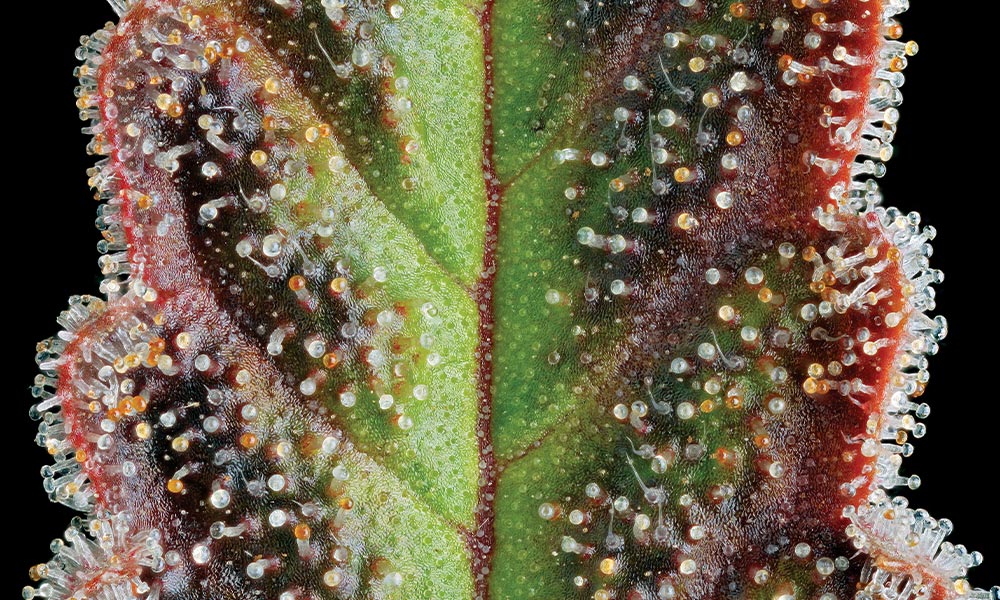
Christiansen captured this tiny section of a Tenzin Kush leaf by clipping it off the plant in order to photograph it from the top down.
He travels a good deal for work, visiting clients — usually dispensaries and breeders — across the hubs of the adult-use legal cannabis world. But it wasn’t always like this. When Christiansen first started photographing cannabis in 2009, he says “no one wanted to pay to have pictures.”
“Legalization made companies need marketing,” says Christiansen. “In 2010 and 2011, I would go into dispensaries I would ask them if they needed a photographer and they would say, ‘We’re good because we have a guy in the back with a camera.’ I used to go in and purchase the dry bud to photograph myself — when I’d ask them for specific photogenic buds, most of the time they’d say no — and now people are bringing me into the back on a perfect day of harvest and thanking me for being there.”
But while the regulated market is the driving force behind his cannabis photography business today, Christiansen credits prohibition for creating such a high demand for cannabis photography.
“Prohibition has prevented it from being normal to see a plant,” says Christiansen. “Major growers have to protect their plants, they can’t just bring people into their grow rooms because you run a risk of bringing microscopic things into the grow room such as bugs and mold.”
Through his photographs, Christiansen makes the cannabis plant accessible to the average viewer. In fact, most cannabis photography does this, but what sets Christiansen apart, is the extra depth he brings to each image, providing the unique perspective on the bud that allows cannabis consumers to consider the plant in a more scientific way.
Exploring the Cannabis Galaxy
Some of the earliest digital photographs (so early, in fact, that they don’t technically fall into the category of what we consider a digital photography) were taken by NASA’s Mariner 4 spacecraft. As the Mariner 4 flew past Mars, it took 21 grainy, black and white photographs of the planet’s surface and beamed them back to Earth on July 15, 1965. These photographs brought an unexplored planet into the public reality, allowing Americans to explore a foreign object through a collection of captured light. Christiansen’s photography does the same today.
In reality, Christiansen’s photography is an inversion of space photography, focusing inward to the microscopic level rather than out into the cosmos. But the experience of perceiving an object move through space and light is similar, no matter the distance covered.
Watching a collection of 360 macro photographs of a single trichome, stitched together to rotate on an axis, feels galactic. A hyperzoom video gets so close to a trichome head that colors and focus warp through its translucent head. Through Christiansen’s creations, the cannabis plant — foreign to so many of its devoted consumers — becomes explored.
Of course, Christiansen recognizes that he’s not a scientist, just an amateur with a passion for understanding more about cannabis. But his photographs still provide viewers with the opportunity to observe and study the plant. For example, Christiansen once took a video through a microscope that shows what happens when a pin pops a trichome head, releasing the resin, which led to a discussion of the sturdiness of trichomes present in different strains.
“Just yesterday I was talking with someone about how some trichomes aren’t that fragile,” Christiansen said. “Some feel super gritty and they won’t pop when you touch them. And I didn’t even realize that.”
Today, as countless companies dedicate themselves to researching the cannabis in an attempt to monetize its secrets and profit from their discoveries, Christiansen’s photography is a welcome, democratic endeavor.
“I want to give people a better sense of education on what’s actually going on around the plant — really understanding what’s going on and how the plant is forming,” says Christiansen. “There’s always new things to discover.”
Originally published in the print edition of Cannabis Now. LEARN MORE
TELL US, what kind of cannabis photography do you like?



